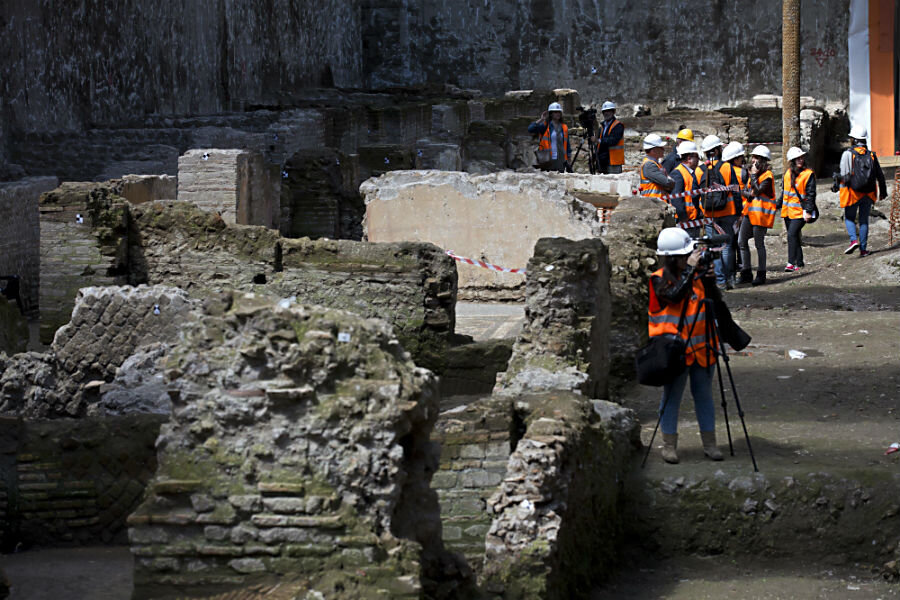Roman subway project unearths 2,000-year-old army barracks
Loading...
In the process of building a new stop for the Rome Metro, construction workers unearthed nearly 10,000 square feet of ancient Roman ruins.
The find, located Monday at the site of the planned Amba Aradam-Ipponio station on the Metro’s C Line, was discovered about 30 feet below street level and dates back to around the second century, when Hadrian was emperor of Rome.
The ruins, a Praetorian Guard barracks, include 39 rooms furbished with mosaic floors and frescoed walls as well as a burial site containing the skeletal remains of 13 adults along with several bronze artifacts.
Praetorian Guards acted as a security force for Roman emperors for hundreds of years during the height of the empire. Hadrian served as a Praetorian before assuming power, but did not employ the services of the guards during his time as one of the “five good emperors” of the Nerva-Antonine dynasty.
“It's exceptional, not only for its good state of conservation but because it is part of a neighborhood which already included four barracks,” Culture Ministry representative Rossella Rea said of the find, according to the Associated Press. “And therefore, we can characterize this area as a military neighborhood.”
At its height, the Roman Empire encompassed nearly 2 million square miles, remnants of which are still being uncovered today throughout Europe. Last month, a homeowner in Wiltshire, England, discovered the remains of a lavish Roman-era villa under a garden when converting an old barn into a play area for his children.
Local head of archaeology Francesco Prosperetti told the BBC that the discovery would not delay the Metro station’s opening, slated for 2020, but may result in some adjustments to its design. Officials hope the barracks site can be integrated with the station as construction continues.
Material from The Associated Press was used in this report.








